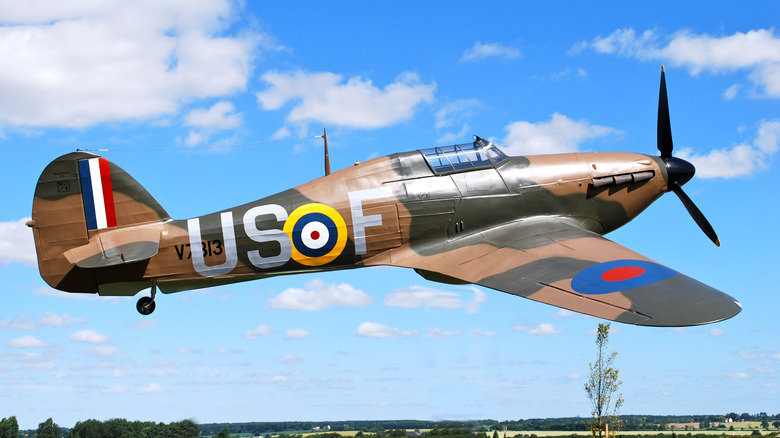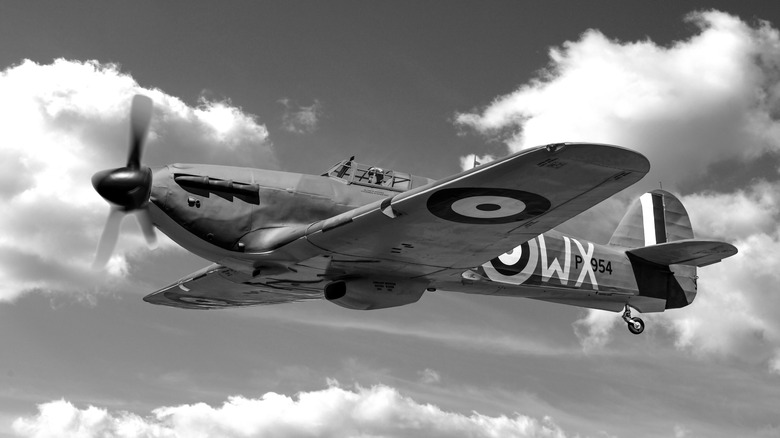One Of The Most Overlooked WWII Fighters: The Hawker Hurricane
When most people think of the most legendary planes of WWII, the Supermarine Spitfire or the Boeing B-17 Flying Fortress will likely come to mind. However, there is one often overlooked fighter plane that helped turn the tide in a pivotal battle, the first battle fought entirely in the sky. In 1940 when the Nazi Germany air force launched its major attack on the United Kingdom, the Hawker Hurricane was there to fend them off.
The Hurricane is responsible for incapacitating around 60% of the German planes that went down during the Battle of Britain. Designed by Sydney Camm in the early '30s, the Hurricane became the first airplane manufactured for the Royal Air Force to achieve speeds exceeding 300 miles per hour thanks to its Rolls-Royce Merlin V12 engine. It was fast and in supply, as there were only 19 squadrons of Spitfires during the Battle of Britain, while there were 32 squadrons of Hurricanes. There were 1,715 Hurricanes in total in that battle, more than the other fighters combined. But that's not the only reason the Hurricane saved the day.
A reliable plane that performed an important role
One advantage the Hurricane had during one of the most intense dogfights in history was its construction. Unlike the Spitfire, the sides of the Hurricane were reinforced with Irish linen, allowing it to take more damage. Explosive rounds could even sometimes go straight through the craft without exploding. It was also easier to repair if the internals weren't hit, as Irish linen is simple to plaster. When it came to coming down for repairs, the Hurricane had no issues, as its large undercarriage provided stable landings.
The Hurricane also had some solid firepower; because of its large, strong wings, it could hold heavy weapons. The craft was equipped with four 20-millimeter Hispano Mk II cannons and either two 250 or one 500-pound bombs.
It being around 20% percent bigger than the Spitfire did come at a cost. Although the Hurricane could turn faster than the German Bf 109 and the Spitfire, it was slow at climbing and inferior at general maneuverability. To play to its strengths, the Hurricane was tasked with taking out the bombers during the Battle of Britain instead of going after the fighters.
Although the Hurricane did not evolve at the same rate as the Spitfire, it was still in production until 1944. It was used for many tasks, including bombing and defending merchant convoys after being catapulted from ships. It may not get as much credit as the Spitfire, but its impact on the war is undeniable.

